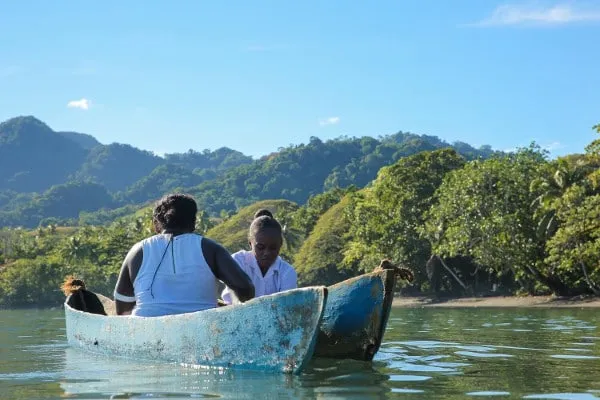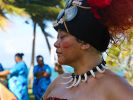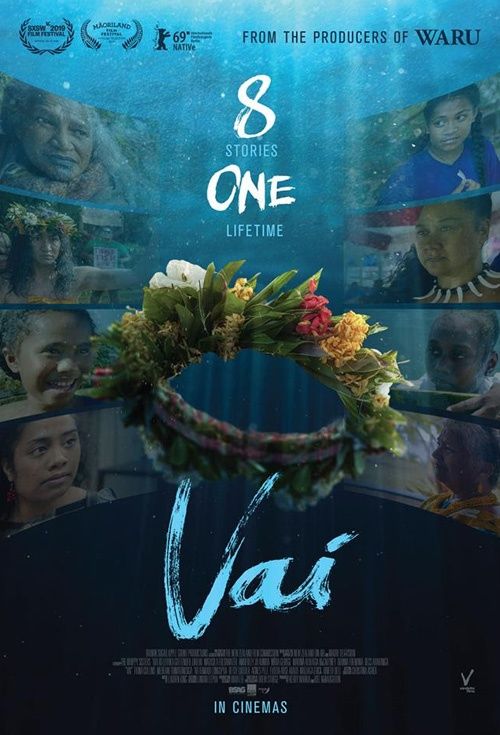Eye For Film >> Movies >> Vai (2019) Film Review
Vai
Reviewed by: Jennie Kermode

The history of the South Pacific is a history of movement between isolated communities, with all the sorrow - and potential for renewal - that brings. What links these communities is water, and it's through their relationship with water that members of these communities retain a sense of togetherness. Although long periods of isolation during their early development mean that the languages off some of the islands are no longer mutually intelligible, they retain certain key words in common, and the term for water - vai - is one of them. This portmanteau film follows a character called Vai who travels between the islands over the course of her life.
Shot by indigenous female filmmakers on Fiji, Tonga, the Solomon Islands, Kuki Airani (the Cook Islands), Samoa, Niue and Aotearoa (New Zealand), the film is comprised of episodes in Vai's life each shot over the course of a single day. The first thing that stands out about the film is the ease with which we can recognise Vai despite her being played by a different actress each time (something that feels quite natural as we watch her age). The filmmakers developed the script together but nevertheless, the consistency in their interpretation of her character is remarkable. Fierce, stubborn, passionate and strongly connected to her environment wherever she is, she pushes at the limits of what women are expected to be at the same time as embodying the traditional feminine values of the region.

Part of the importance of this film is as a platform through which the filmmakers can represent aspects of their cultures that may not be well understood by other outside world, but there is also much abut it that's universal in scope. Vai's family relationships play an important role, as do her efforts to access education, something that anyone who has struggled to study when living in poverty will be able to relate to. In one episode we see her campaign to stop a multinational corporation from depleting the fish stocks of one of the islands, emphasising the role of local people as shepherds of the sea but also making clear that environmental concerns are not just an indulgence for people in rich countries, with the poorest people often on the front line. She is not presented as a figure who will take a leading role in saving the world - a very Western, individualist narrative - but is instead celebrated for her contribution to community action, pushing consistently for the things she believes in over time, making a difference because she embodies the drives and actions of many.
Time itself is an interesting phenomenon in this film. Despite her ageing, Vai always seems to exist in our present, using modern technology and addressing modern concerns. In the final sequence we see her reflecting on her ancestry and looking forward into the future, understanding herself as one in a long line of women. There's a sense that just as the character isn't limited to a single actress, fundamental elements of her are not limited to one woman: there has always been and always will be a Vai, as omnipresent as water, enduring no matter how the world changes. There's a tremendous sense of strength here, powerful as the water. Male characters, almost always functioning as antagonists, skitter around the edges of the story, never able to wield any real influence over this central force.
Viewers in the West and the Global North are used to seeing women in films from elsewhere as victims or otherwise subjugated figures. Vai may surprise them.
Reviewed on: 09 Mar 2019
















